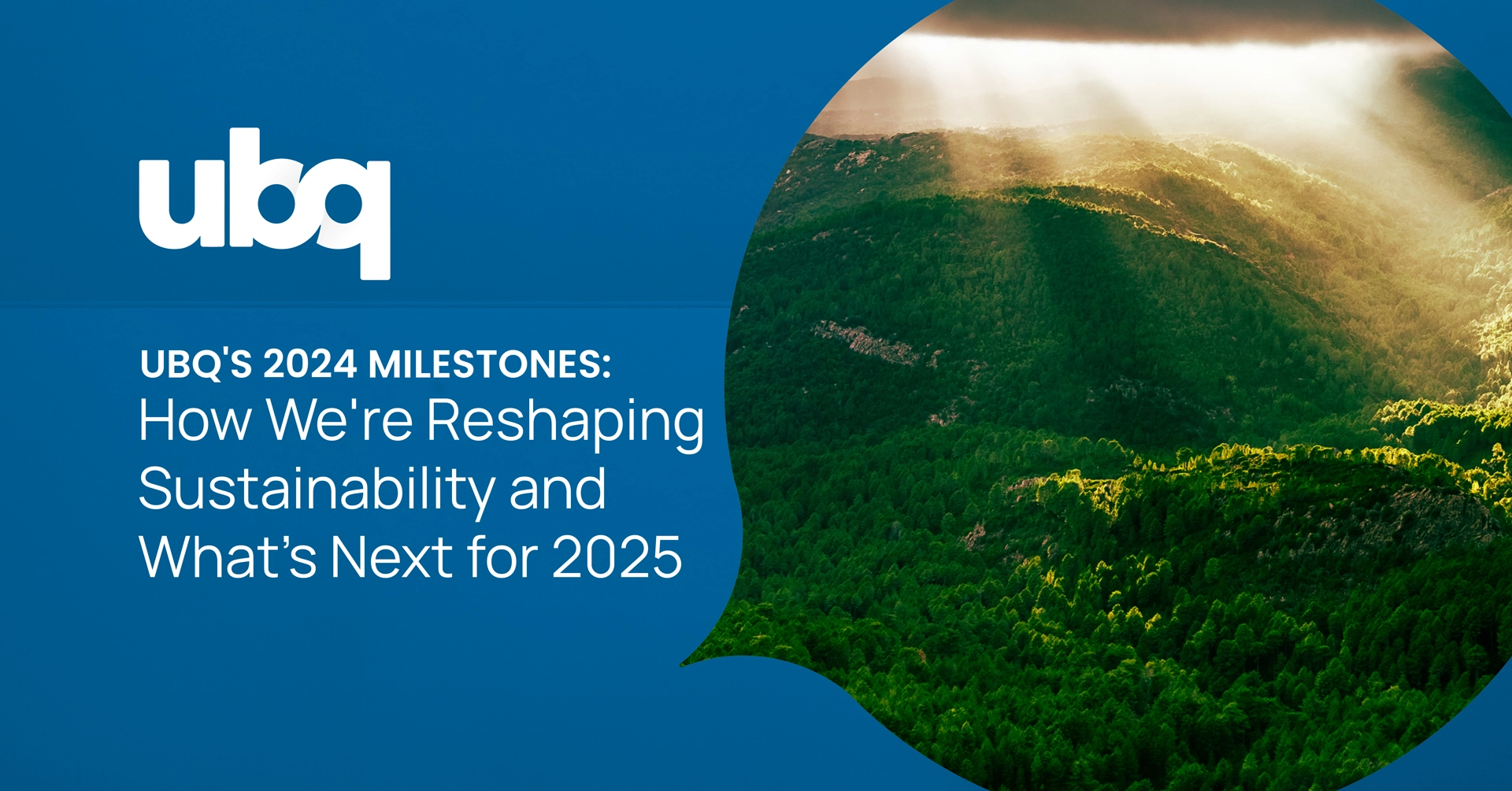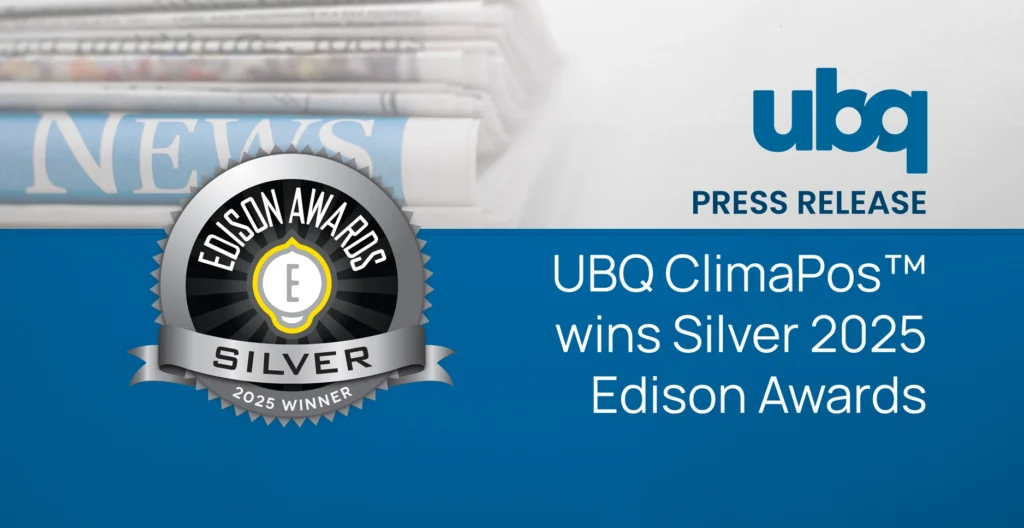With 2025 underway, we want to reflect on our past successes and explore the future of sustainability. The year 2024 marked a pivotal year for UBQ, during which we reached multiple milestones on our journey to build a more circular world.
Tailoring UBQ™ to Industry Needs
We started 2024 off strong with the launch of our product portfolio now available offering innovative sustainable materials solutions. The expanded portfolio makes it easier for companies across industries to have an immediate sustainability impact. By choosing the material that best fits their needs, companies can reduce the carbon footprint of their product and supply chain, and ensure progress towards meeting their sustainability goals.
Many companies across a range of sectors have already started implementing the new materials into their products and value chains. Today, consumers in Latin America can purchase sustainable pet products such as a doghouse or a cat litter box with UBQ integrated from Rimax, while shoppers in Europe can prioritize the planet while buying the Crescent Garden Emma planter in ACTION stores.
An increasing number of plastic manufacturers and compounders are incorporating UBQ™ materials into their products, enabling companies worldwide to create more sustainable solutions. For example, Mercico utilizes UBQ™ in logistics boxes for the textile industry, while Ojara produces clothing hangers that include our material.
As demand for sustainable circular solutions grows, we will continue to innovate, introducing new formulations of UBQ™ that enable customers to benefit from tailored alternative material solutions.
Opening Our Netherlands Industry Scale Facility
2024 saw the much-heralded opening of our industrial-scale facility in Bergen op Zoom, based in the heart of the Netherlands’ manufacturing stronghold. Capable of converting 104,600 tons annually of municipal solid waste from end-of-life sites into 80,000 tons of UBQ™, the facility enables UBQ to reach more markets and help more companies reach their sustainability goals.
With distribution centers located around the world, we can ensure that our UBQ™ material is available in all countries. UBQ also secured a €5 million Just Transition Fund Grant awarded to help make the energy-efficient facility even more sustainable through a new energy monitoring system.
Validating UBQ’s Material
To demonstrate the true climate impact of UBQ’s materials, we commissioned a 3rd party assured life-cycle assessment (LCA) run by the global sustainability consultancy ERM. The study assessed materials produced at the Bergen op Zoom plant to determine the environmental impact, including the carbon footprint of the production process, and verify how it can contribute to key sustainability goals of decarbonization, reducing environmental impact, and increasing circularity.
Decarbonization & Climate
The LCA showed that UBQ’s materials deliver carbon benefits, both during the production process and through biogenic carbon removal. UBQ’s efficient factory and production process creates less than 1/20 of the carbon of virgin polymer production and uses minimal land for production and sourcing of raw materials. Through the process of converting organic and hard-to-recycle waste, we also remove nearly 1.2kg of biogenic carbon per kg of UBQ™ produced. Overall, this creates a -1.02 total carbon footprint impact, making UBQ™ a carbon-negative material.
Environment & Nature
In addition, UBQ’s materials and production process help companies avoid emissions. By diverting waste from landfills and incinerators, we create a considerable avoidance of greenhouse gas emissions. Plus, by replacing oil-based plastics in products, we’re avoiding and mitigating the emissions associated with fossil fuel extraction, refining, and processing. We estimate the total avoided emissions to be as much as 7.6kg of CO2 equivalent emissions per kg of UBQ used in a 20-year horizon.
In addition to assessing carbon removal and emissions avoidance, the LCA also explored how UBQ’s materials are impacting other important environmental categories such as air quality, resource utilization, infrastructures like buildings, cities, and roads, as well as nature and biodiversity as a whole.
For example, photochemical ozone creation potential (POCP) measures how much a substance can contribute to the formation of ground-level ozone, a cause of air pollution that harms both human health and the environment. In this metric, UBQ was shown to have as much as 8-12 times lower POCP than oil-based plastics.
Furthermore, we explored the potential of acidification on both freshwater and inland environments. Acid pollutants can harm the soil, prevent flora growth, reduce biodiversity and harm the balance of nutrients in the water. UBQ’s overall acidification potential was significantly lower than those of common, oil-based polymers.
Circularity & Resource Efficiency
Finally, the LCA highlights how UBQ supports circularity and improves resource efficiency. Many waste streams are entangled with multiple materials mixed in and often do not fit neatly into biological or technical recycling systems. As a result, these materials often end up in landfill or incinerators. Thanks to UBQ’s technology, we can now preserve and re-use these materials.
The circular economy requires us to look at the big picture. UBQ’s production process is resource efficient, using green energy, has zero operational water, zero effluents, zero combustion and zero emissions. Moreover, the material itself is recyclable, enabling companies to reuse the material at the end of life.
The verified LCA is proof of the impact of our innovative technology and the sustainable impact our materials can have on transforming products and industries.
The summary of the life cycle assessment can be downloaded here: Environmental impact – UBQ Materials
Strategic Focus in 2025
With a successful and transformative 2024 now behind us, we’ve got our eyes firmly set on the future. This year, we’ll be exploring carbon markets and how UBQ Materials might open a new market stream for companies. In addition, we’re excited to build on the work of our LCA by developing it into an Environmental Product Declaration (EPD). An EPD will help standardize UBQ and further demonstrate our products’ environmental credentials to customers.
Our R&D team is working on expanding our product portfolio offering to fulfill specific customer needs. Our innovative new products will be launched in the coming months.
Finally, we’re excited to continue demonstrating to our customers, our target industries and the world, how UBQ can influence day to day life, creating a more circular, sustainable world.
We look forward to you joining us on our journey in 2025!


